Michael Küffmeier




The flip of polarization in multi-wavelength observations

and some encouragement to compare ionization rates with disk sizes
Stefan Reißl (ITA Heidelberg), Hannah Woodward (UVA), Zhi-Yun Li (UVA), Paola Caselli (MPE), Bo Zhao (McMaster)
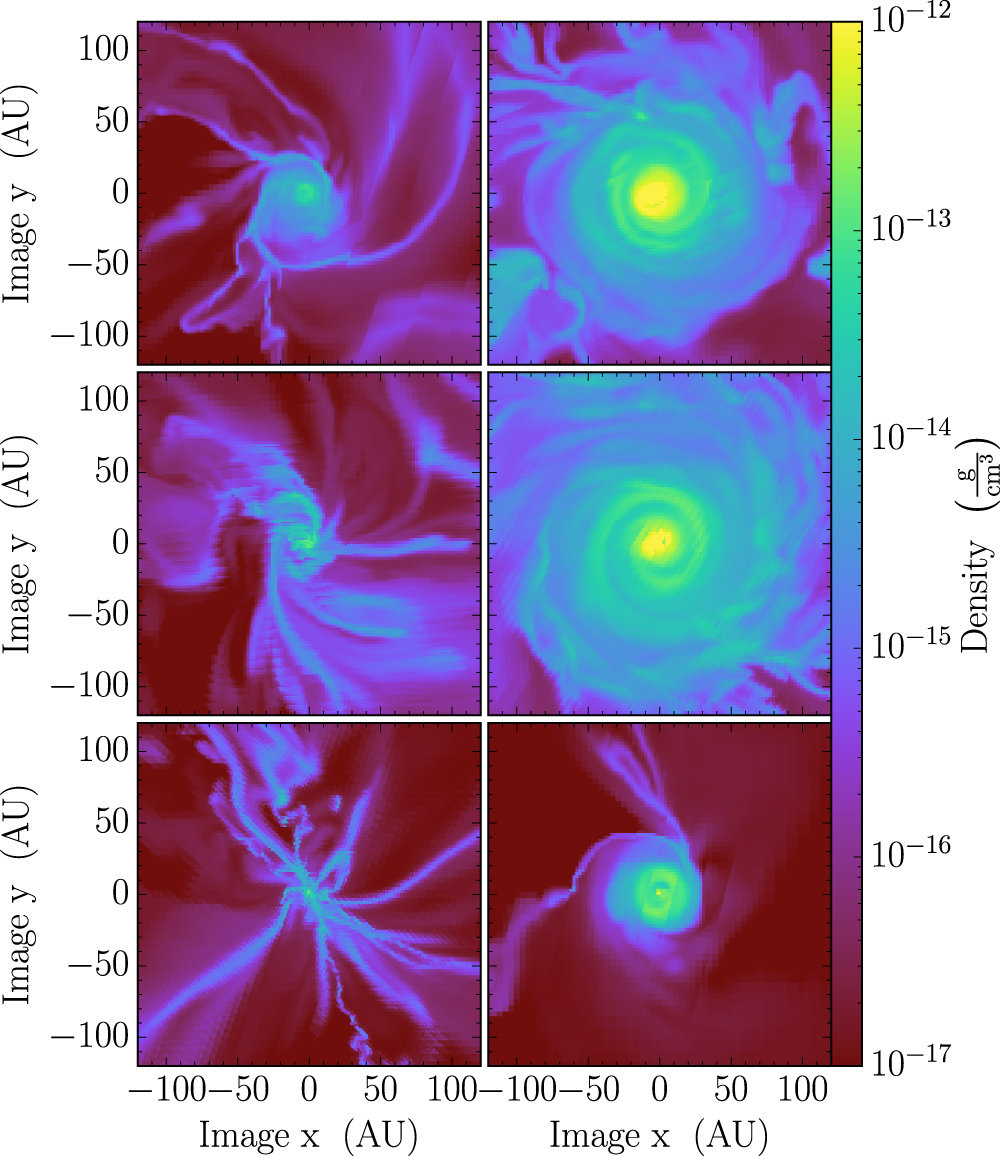
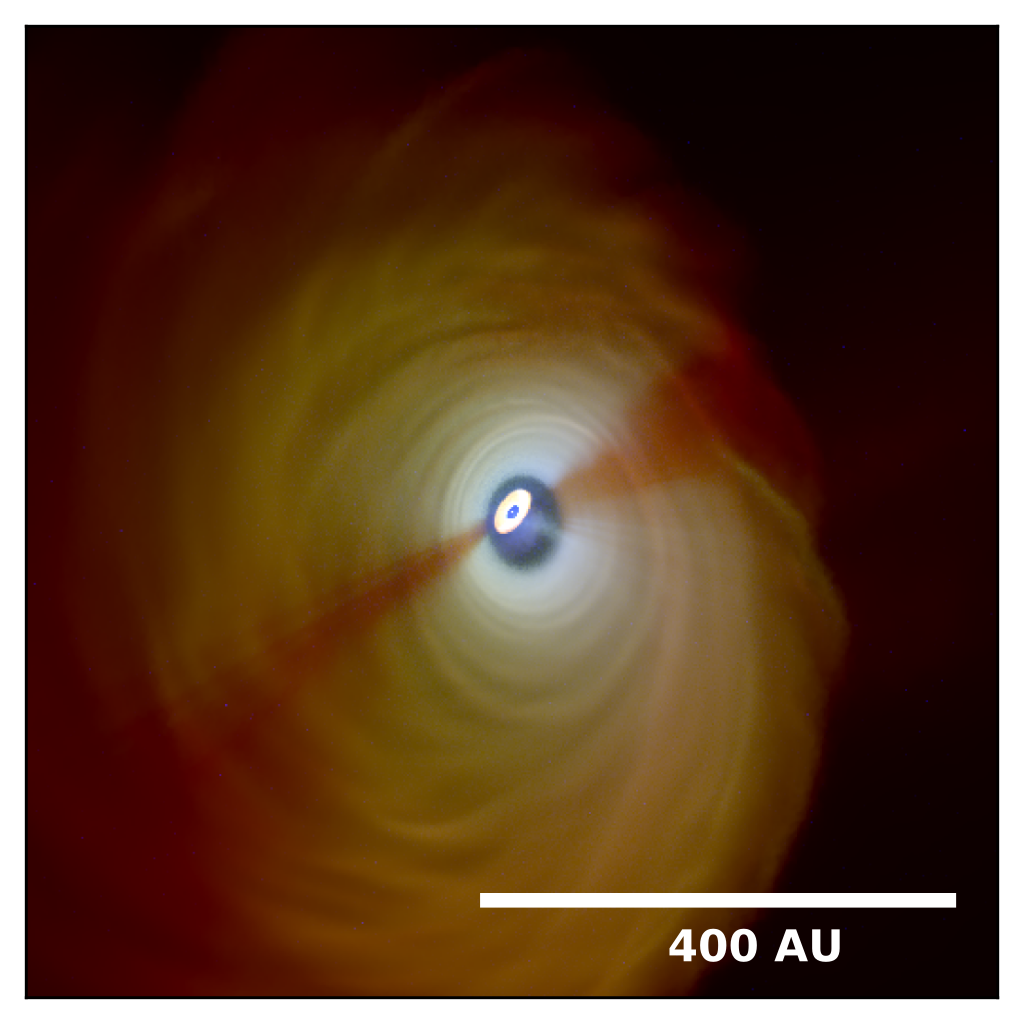
Why care about magnetic fields?
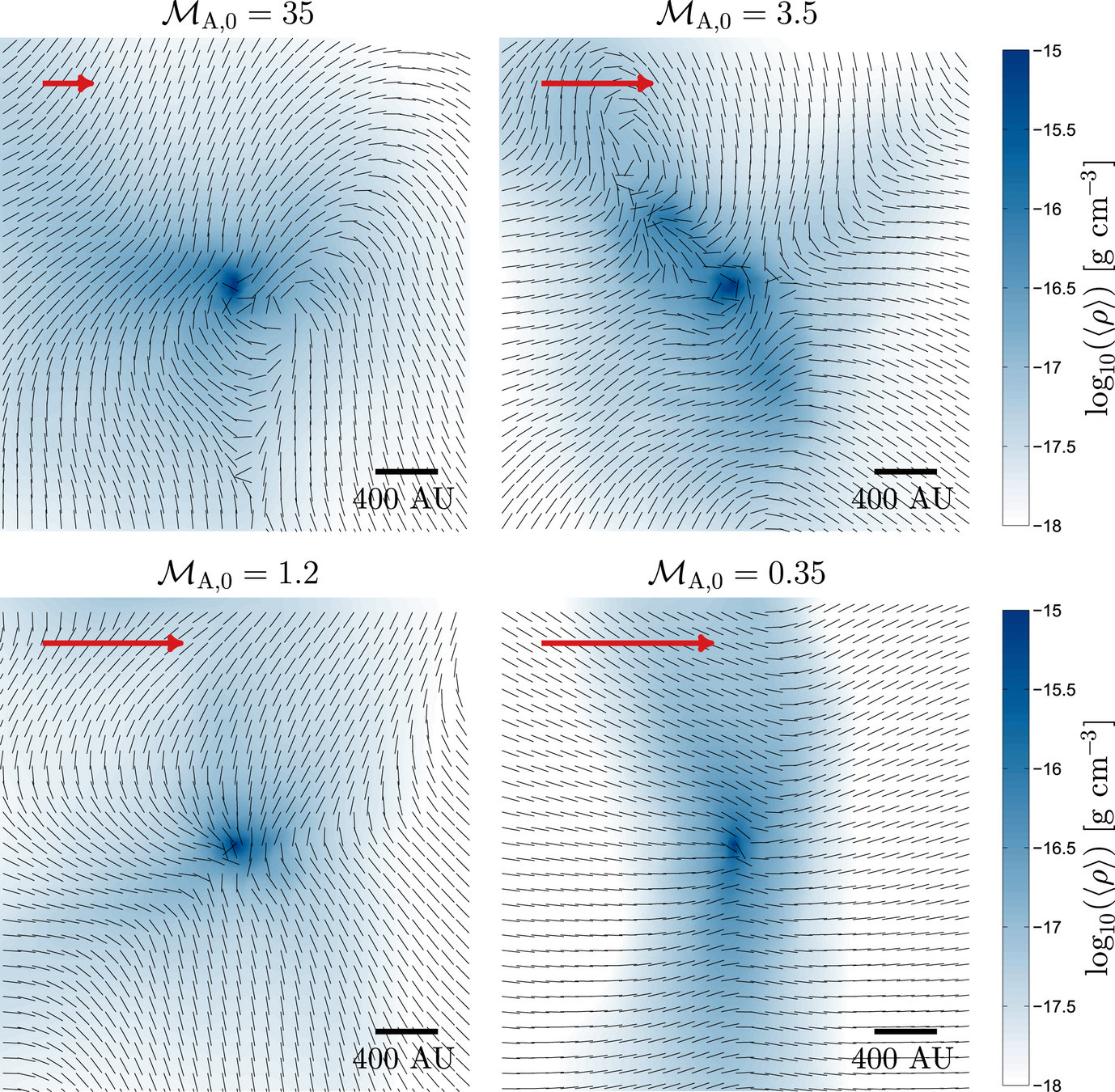
Mocz, Burkhart et al. 2017

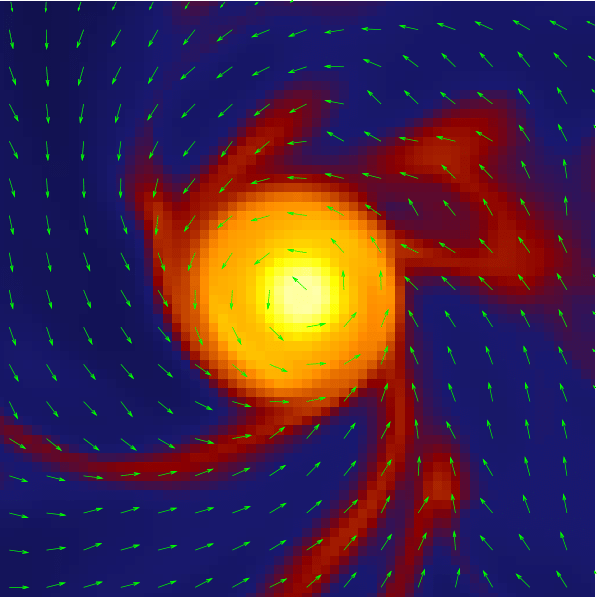
hydro
MHD
Santos-Lima et al. 2012
Stars are born in large assemblies of gas
Star-disk systems form in different environments provided by Giant Molecular Clouds (Size: 10 - 100 pc)
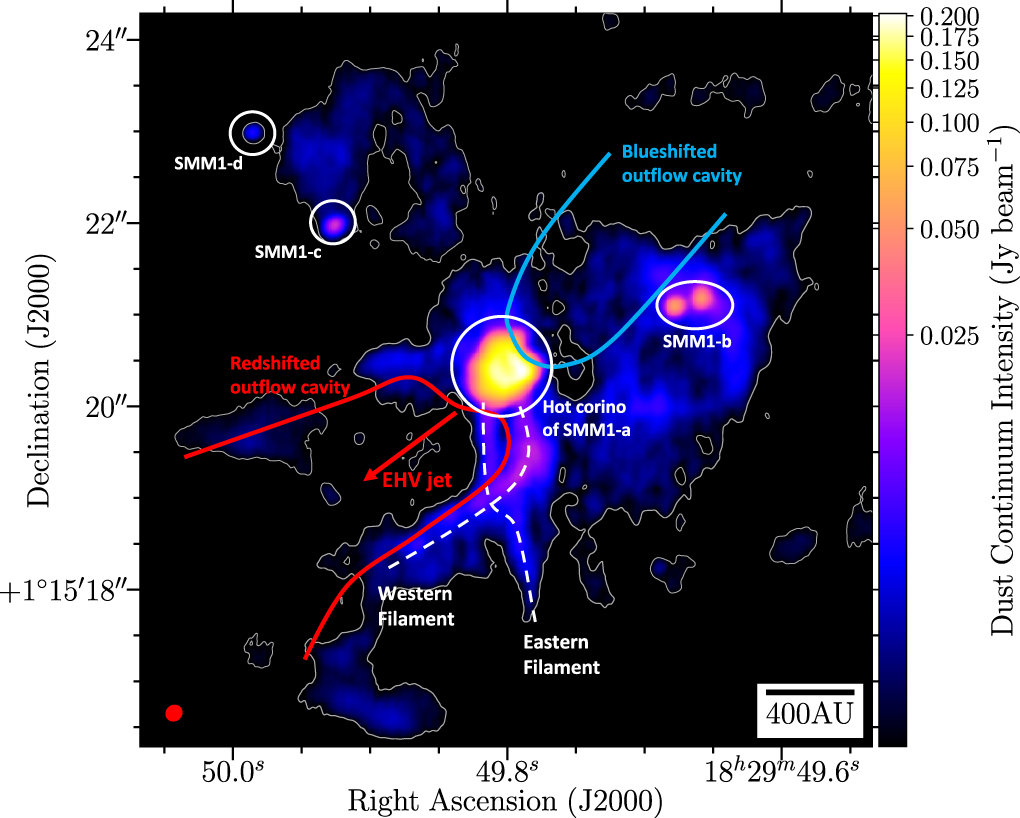
Serpens SMM1 (Le Gouellec et al. 2019)
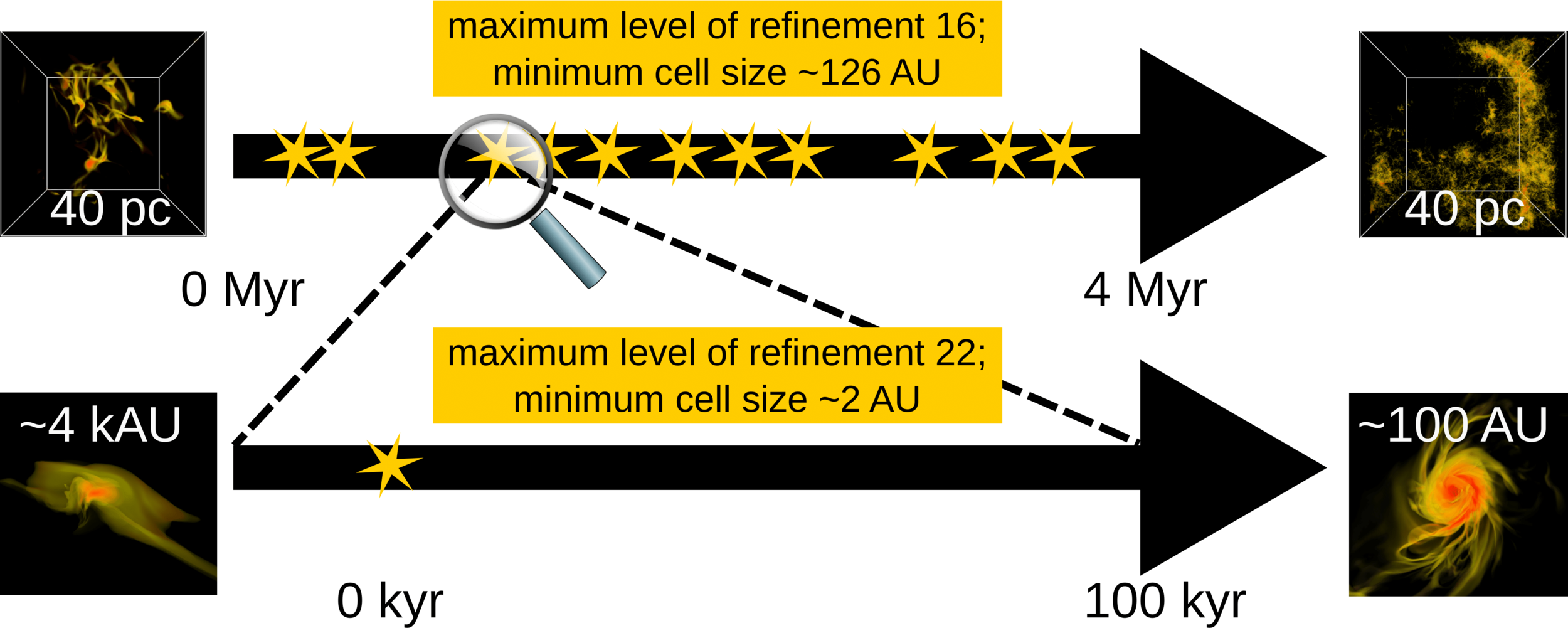
Zoom-in method
Küffmeier et al. 2017
- adaptive mesh refinement
- ideal magnetohydrodynamics
- turbulence driven by supernovae
- stars modelled as sink particles
Zoom-in on embedded protostellar multiple

Küffmeier, Calcutt
& Kristensen 2019
bridge structure similar to IRAS 16293--2422 (e.g. Sadavoy+ 2018, van der Wiel+ 2019, Maureira+ 2020)
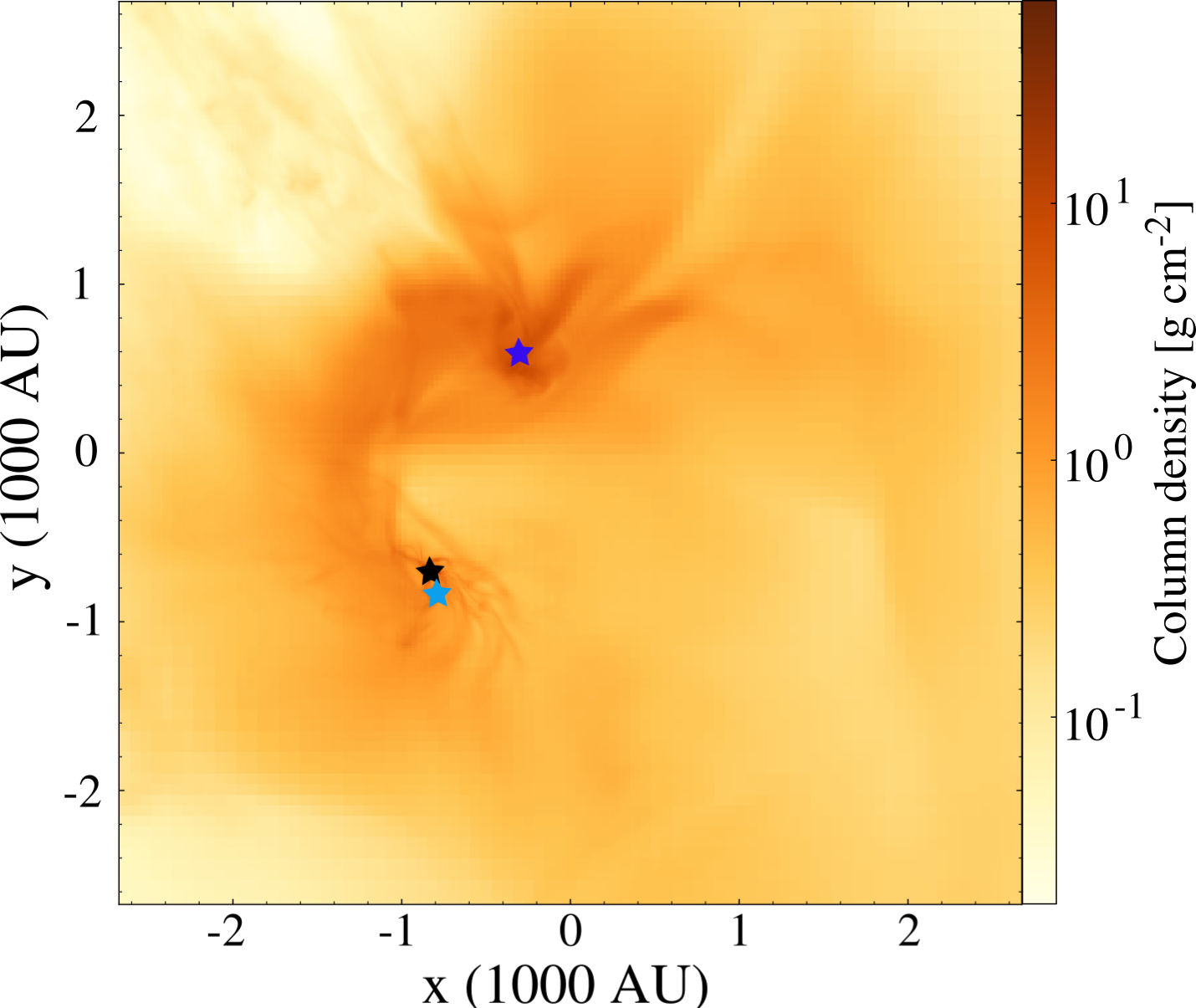
for zoom-ins on disks see Küffmeier et al. 2017/18
Zoom-in simulations
Start from a snapshot of a young Giant Molecular Cloud (GMC)
Model stars as sink particles
Turbulence as a result of supernova feedback
Adaptive mesh refinement (AMR)
ideal Magnetohydrodynamics (MHD)
Magnetic fields in simulation
Küffmeier, Reißl et al. 2020
...in bridge
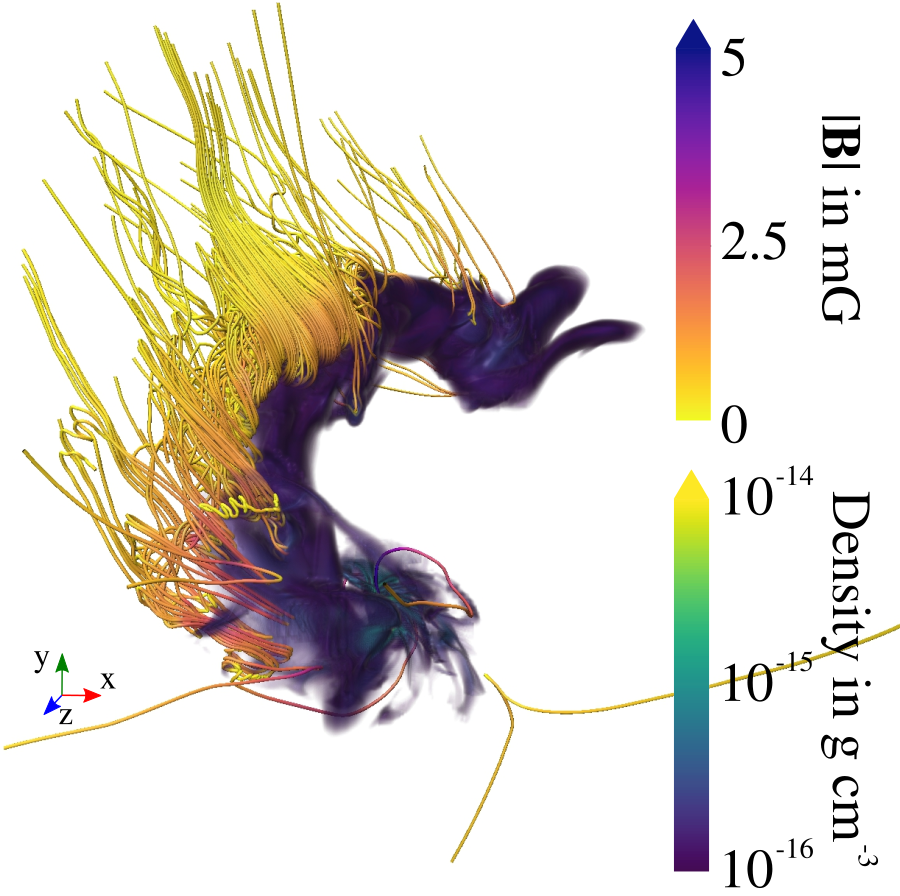
Field strength in bridge:
about 1 to 2 mG

...around primary protostar
Field strength close to foot point:
>100 mG
B-field important on smaller scales <100 au
Dust polarization to measure magnetic fields
Polarization depends on degree of grain alignment and elongation
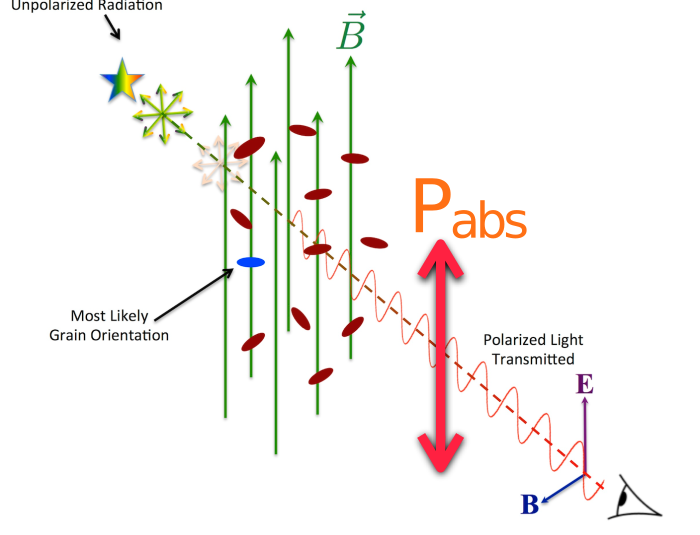
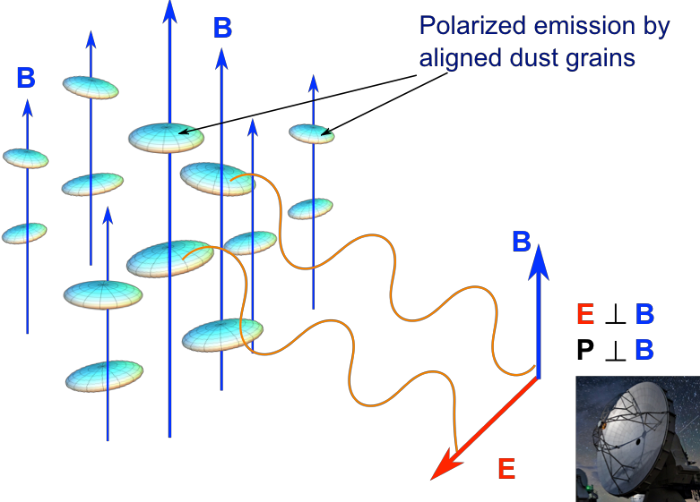
Credit: B. G. Anderson
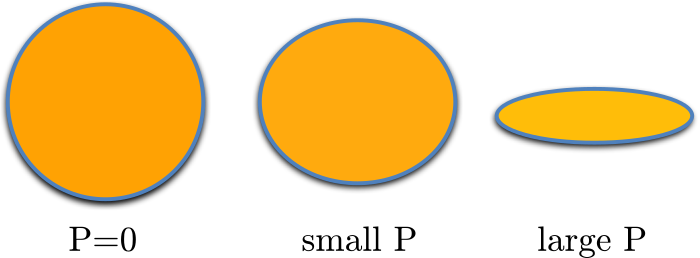
Measuring linear polarization of dust grains allows to determine magnetic field orientation ...
... if you know the origin of polarization.
Stokes vector: description of polarized light
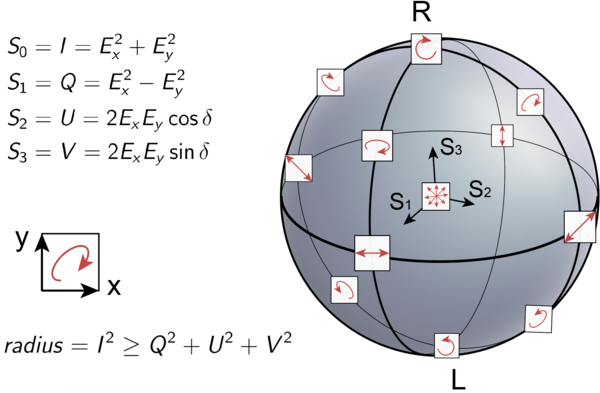
Poincaré sphere; credit: wikipedia
Synthetic observation with POLARIS
Küffmeier, Reißl et al. 2020
Emitted radiation

at 1.3 mm: polarization traces magnetic field structure
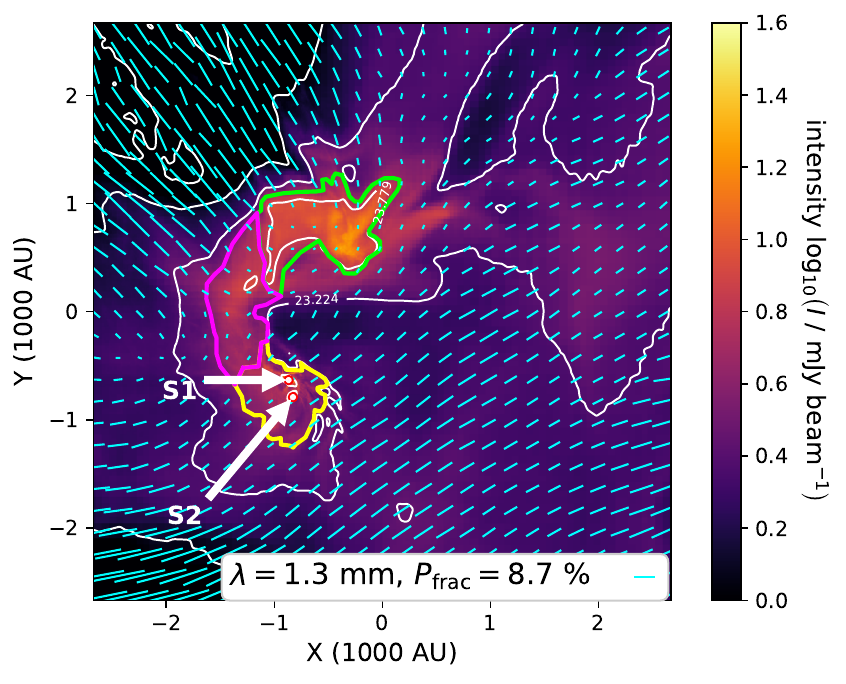
(we display e-vectors rotated by 90°)
Synthetic dust polarization maps at 1.3 mm
Küffmeier, Reißl et al. 2020

Emitted radiation
Polarization fraction in bridge:
a few %
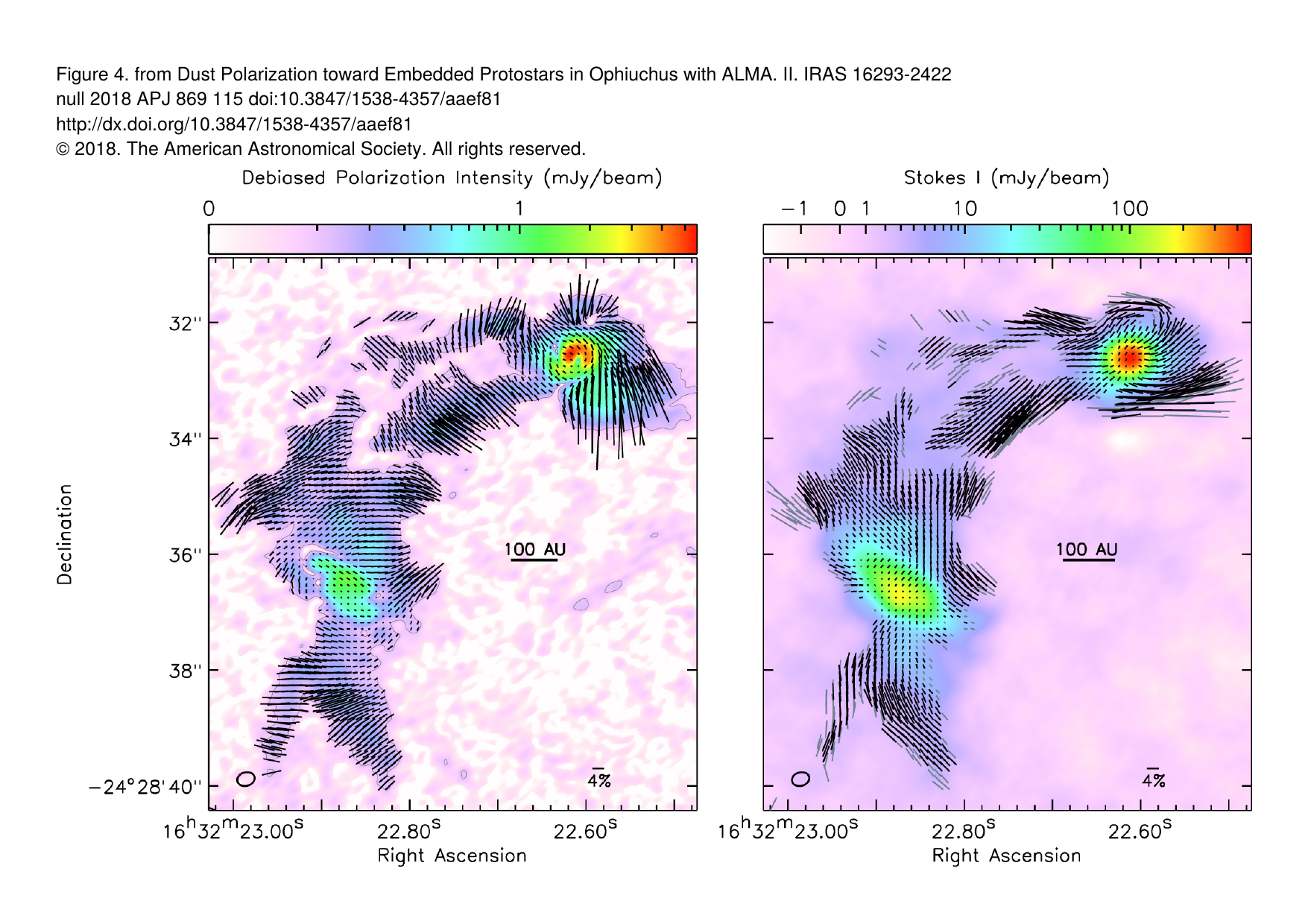
Polarization fraction in bridge:
up to 20 %
IRAS 16293--2422
Sadavoy et al. 2018
alignment efficiency higher than efficiency produced by standard RAT alignment
(also Le Goeullec+20)
IRAS 16293-2422 highly magnetized?
Wavelength dependence: 1.3 mm vs 53 micron

1.3 mm: good tracer of magnetic field
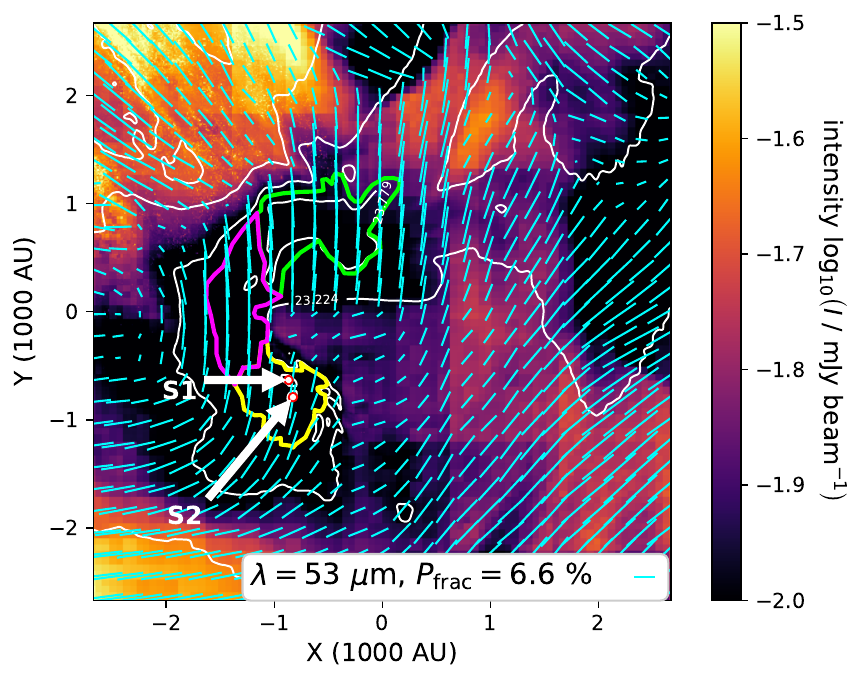
53 micron: tricky tracer of magnetic field
Küffmeier, Reißl et al. 2020
Reason for wavelength dependence
Küffmeier, Reißl et al. 2020
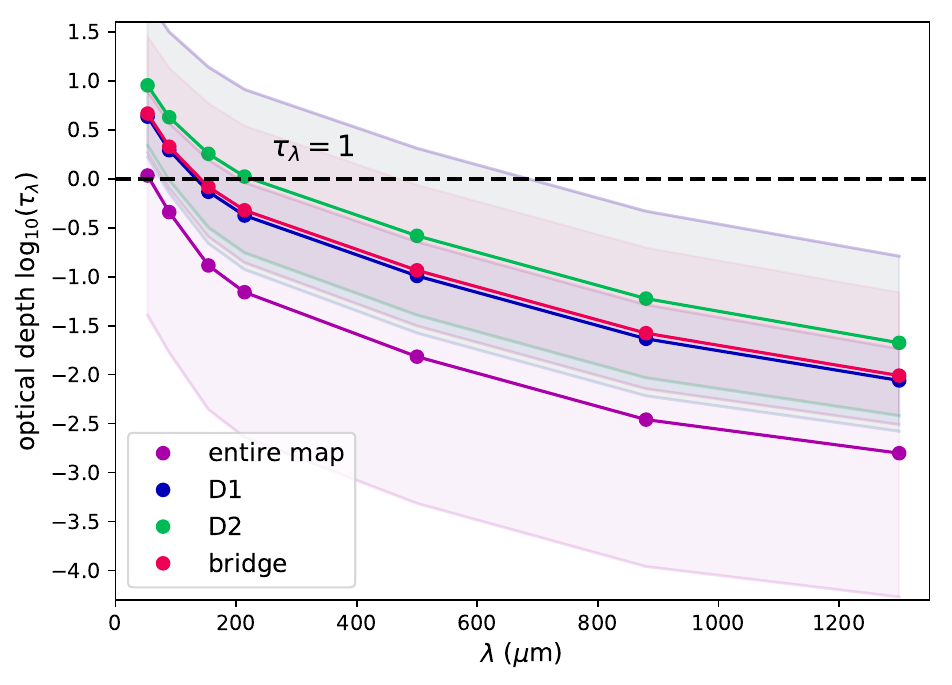
Dichroic extinction
Take-away for scales beyond the disk
< 200 micron: dichroic extinction; challenging to trace B reliably
> 200 micron: thermal emission; linear polarization traces B


(see also Valdivia et al. 2022)
see also Reissl et al. 2014, 2016 for more discussion of the flip
Synthetic maps from ~pc to ~10 000 au scales

Hannah Woodward
UVA undergraduate; graduate at University Wisconsin-Madison from September 2022
Woodward, Küffmeier & Li in prep
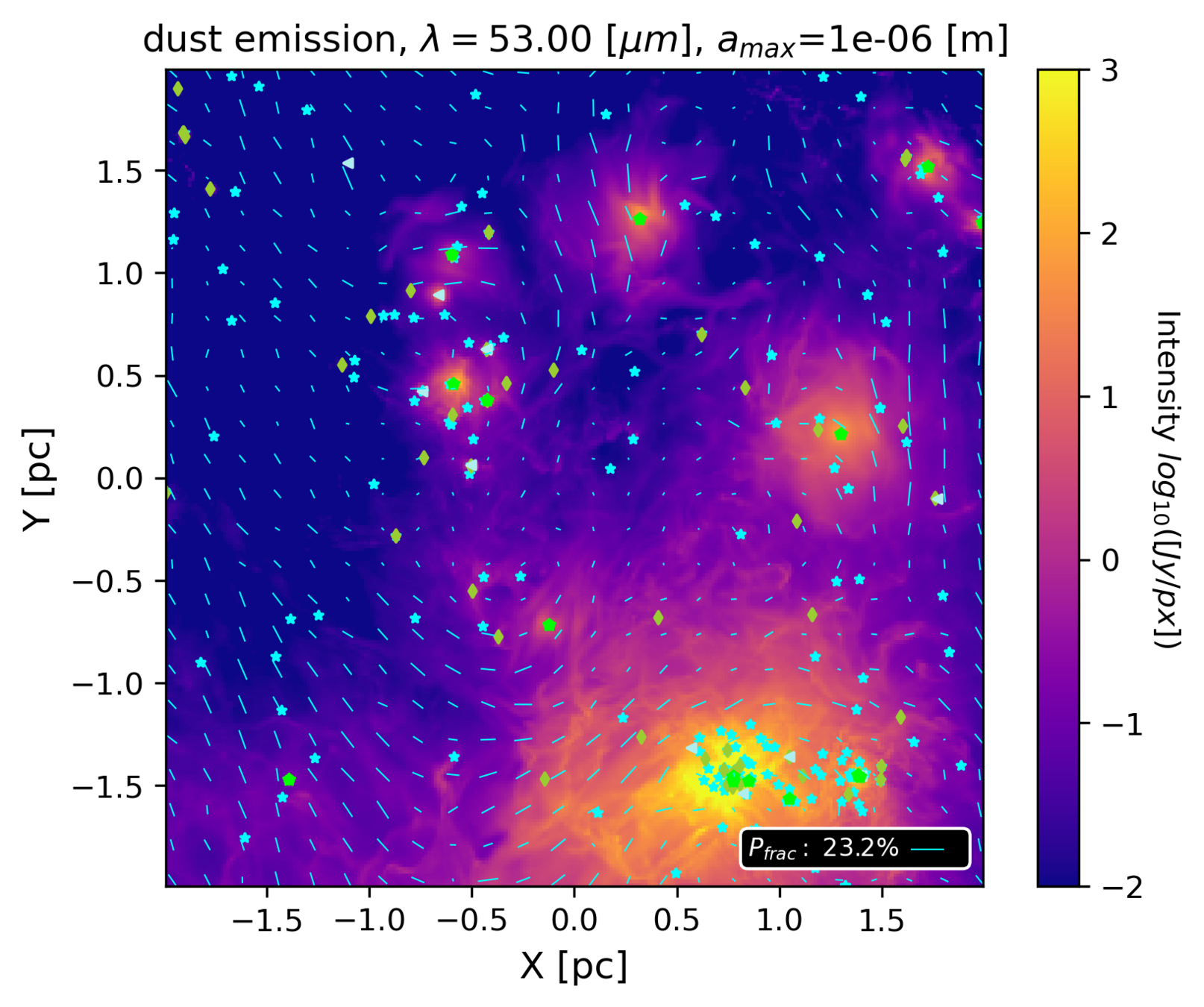
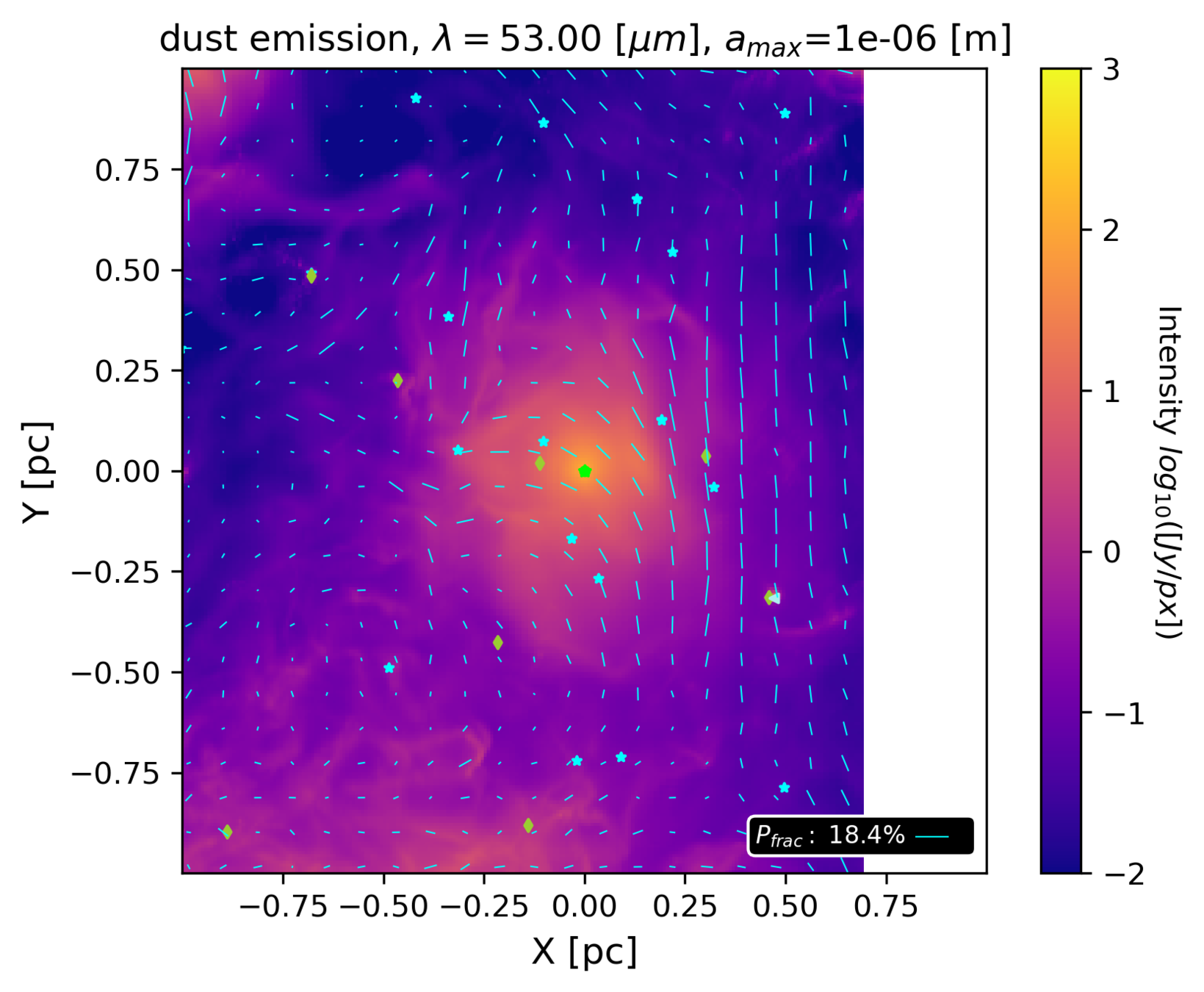
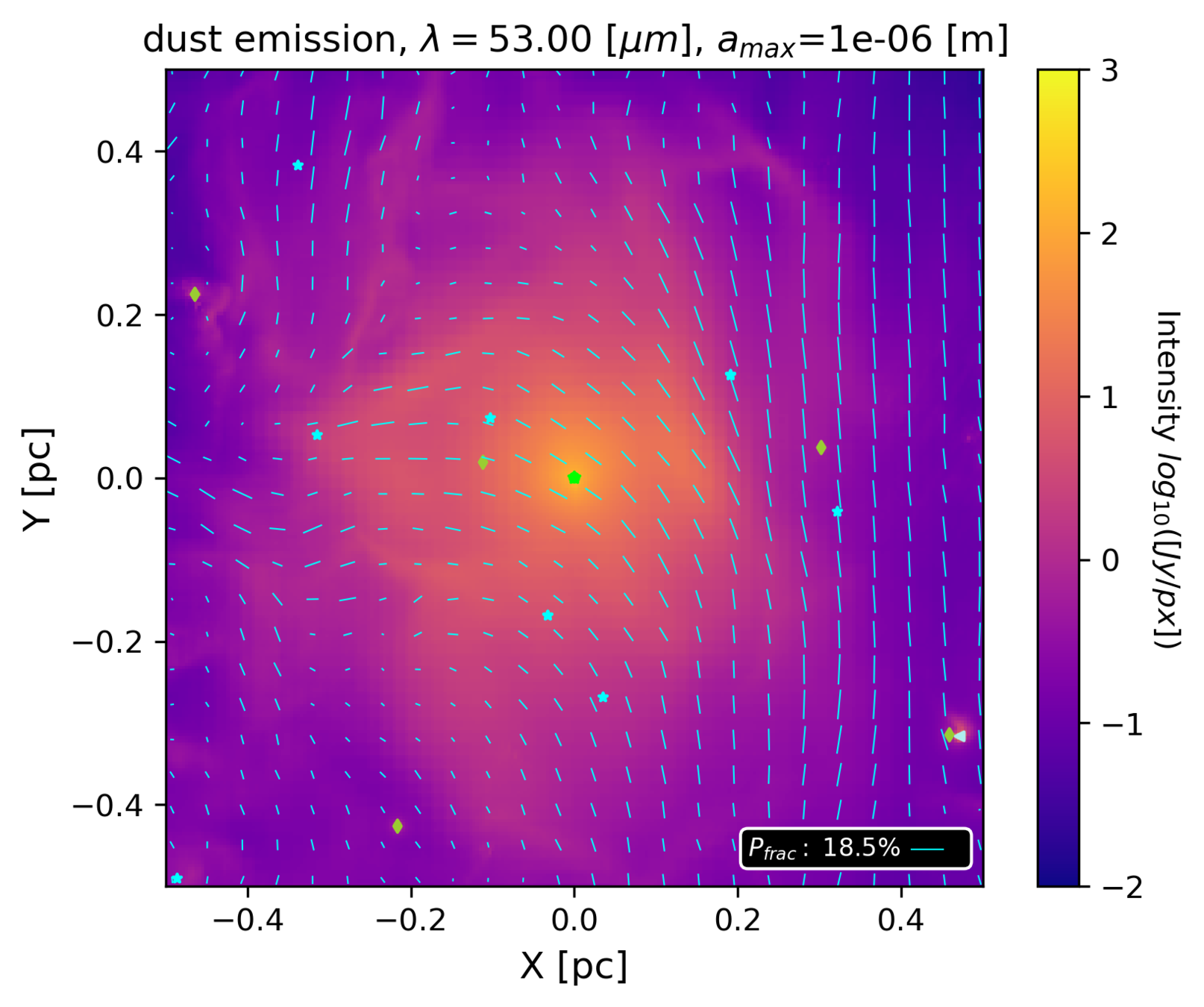

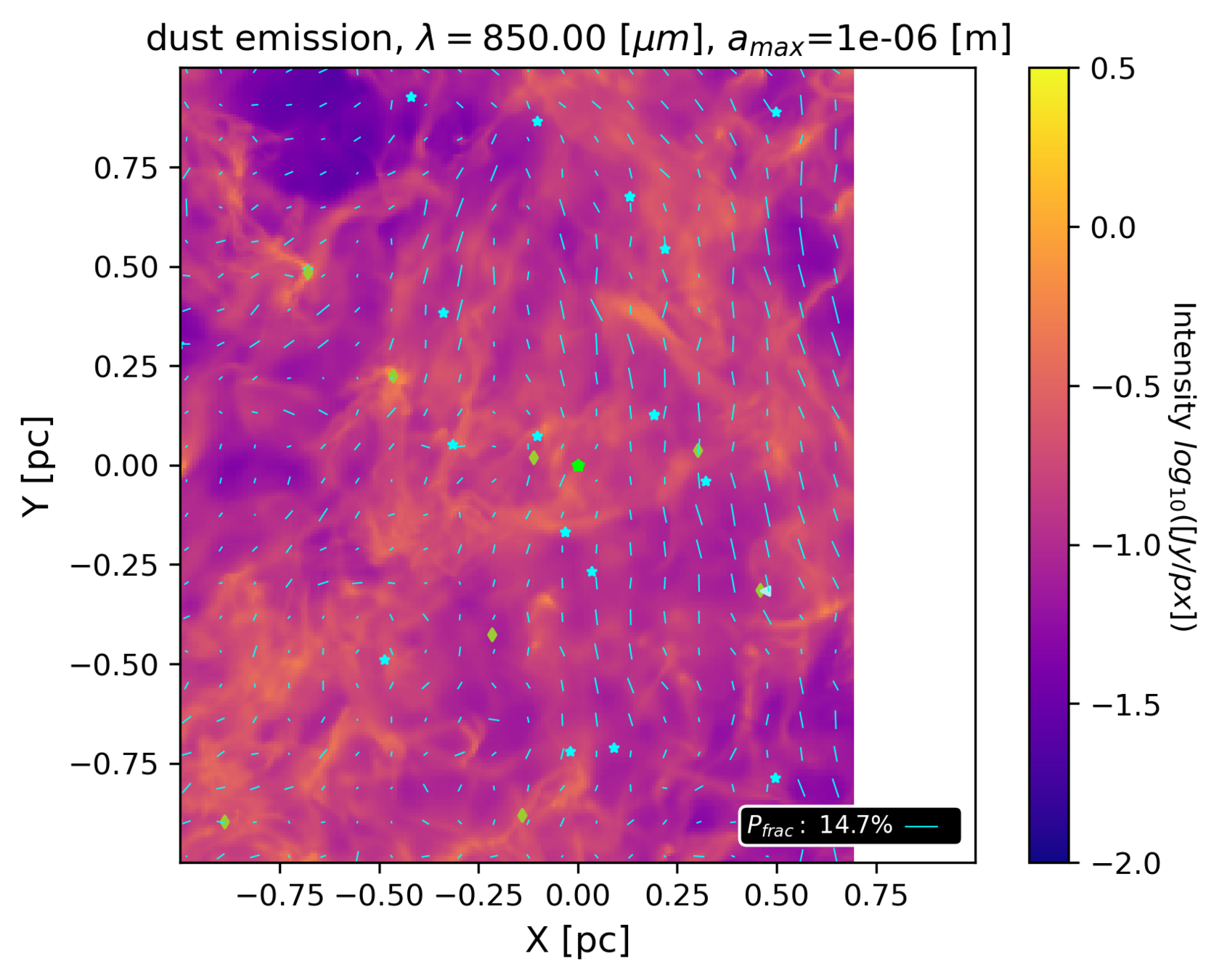
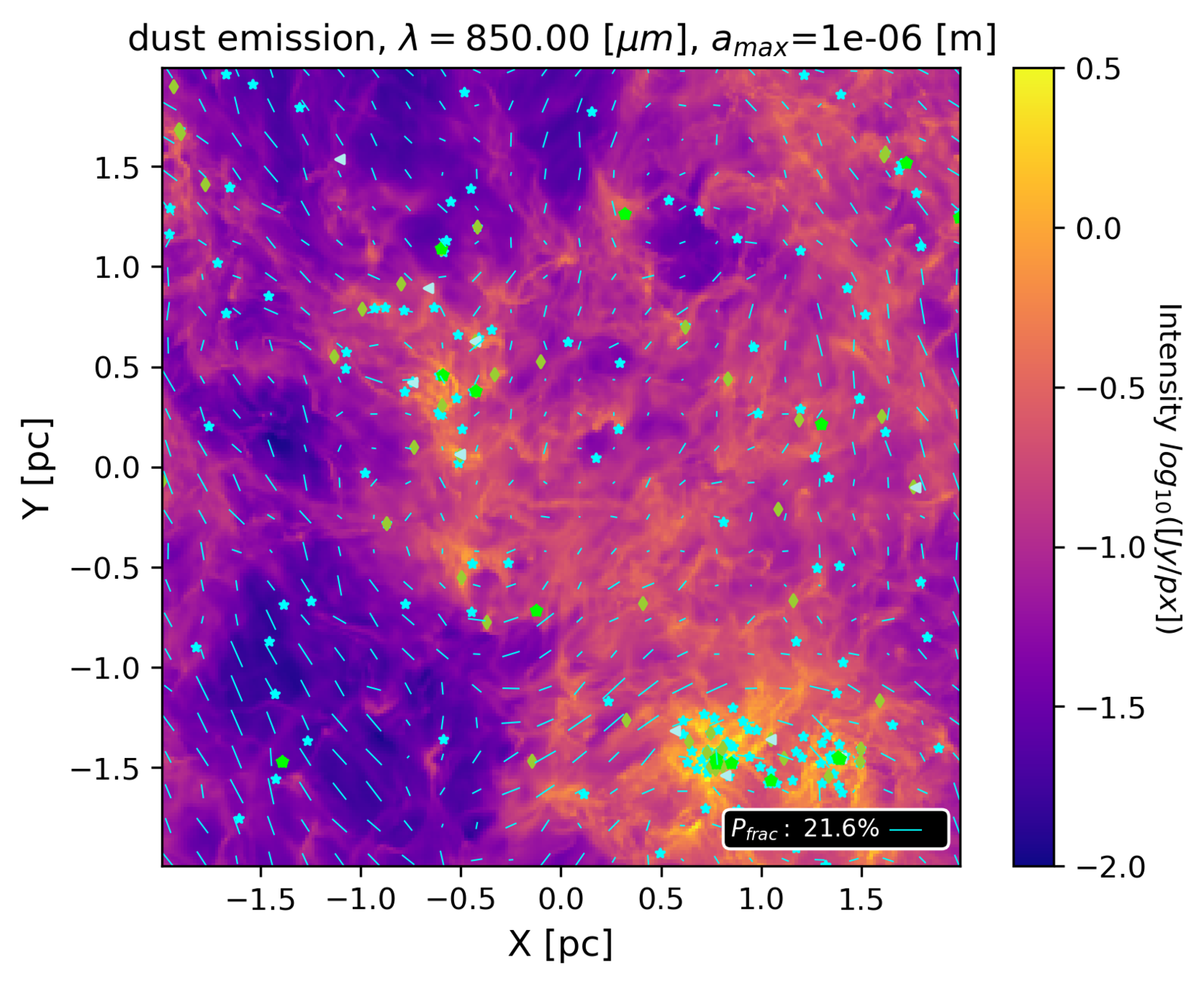
based on MHD simulations of Haugbølle et al. 2018 (see R. Kuruwita's poster)
magnetohydrodynamics
ideal MHD
Ohmic dissipation
Hall
ambipolar diffusion
Non-ideal
Resistivity depends on ionization rate
Küffmeier, Zhao & Caselli 2020
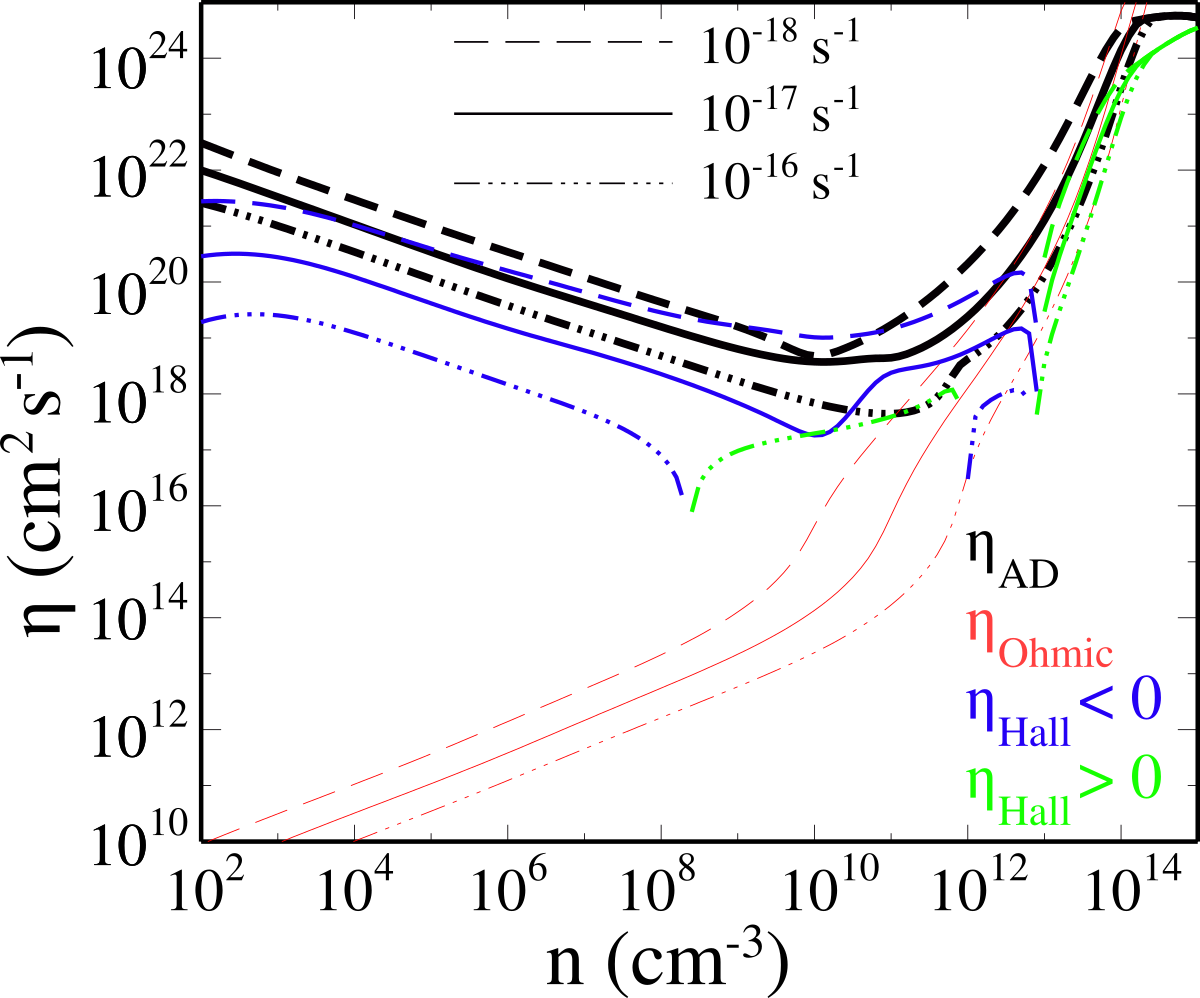
Question: What is the effect on disk formation when differing the ionization rate?
In fact, we use a 2D setup (r- and z-coordinate)
Parameter study
Küffmeier, Zhao & Caselli 2020
Effect of ionization on disk size
increasing ionization rate
enhanced magnetic braking
smaller disks
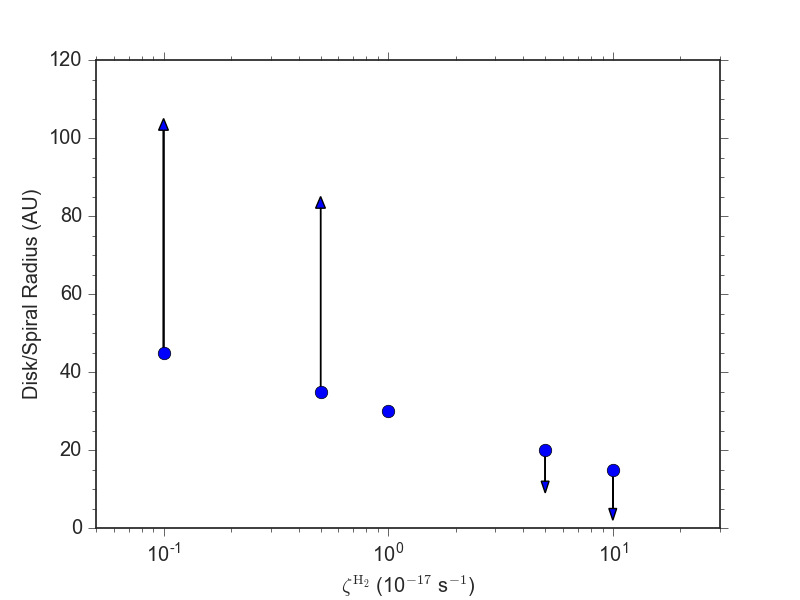
Küffmeier, Zhao & Caselli 2020

History of modeling disk formation

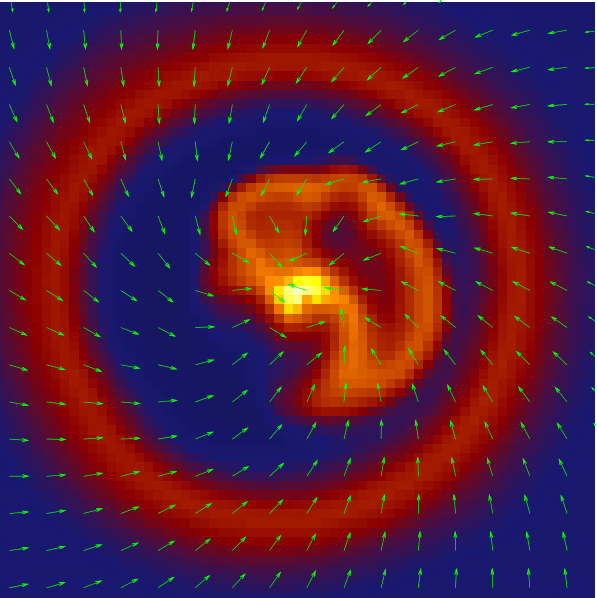

What about magnetic fields?
Help! Where is the disk?!
Santos-Lima et al. 2012
Hydro
ideal MHD
Magnetic braking catastrophe
Angular momentum is transported too efficiently away from the disk
Non-ideal MHD
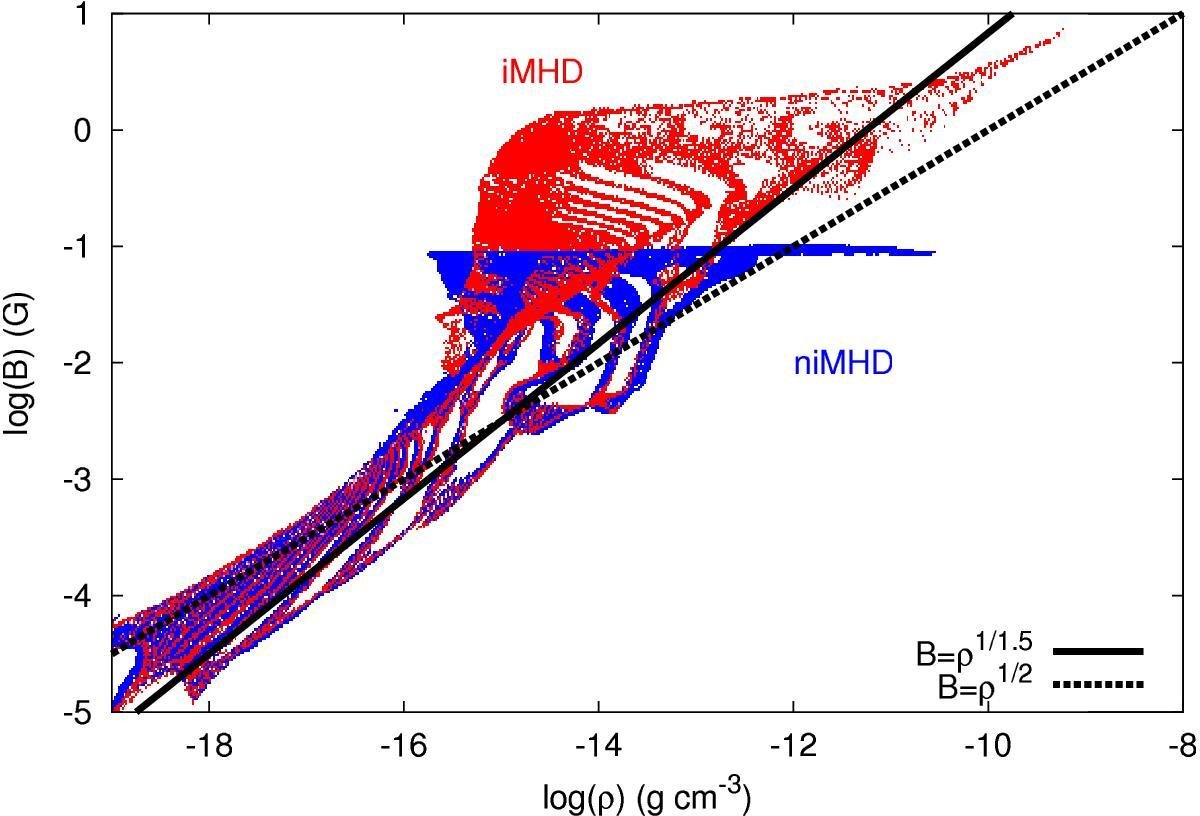
Masson et al. 2016
resistivities quench pile-up of magnetic field
avoids magnetic braking catastrophe
see Hennebelle et al. 2016 or Lee et al. 2021 for analytical studies
more references in Wurster & Li 2018 (review)
Disk size distribution

Tobin+ 2019
Are disks born small in some regions?
Is there a correlation with cosmic-ray ionization rate regions?
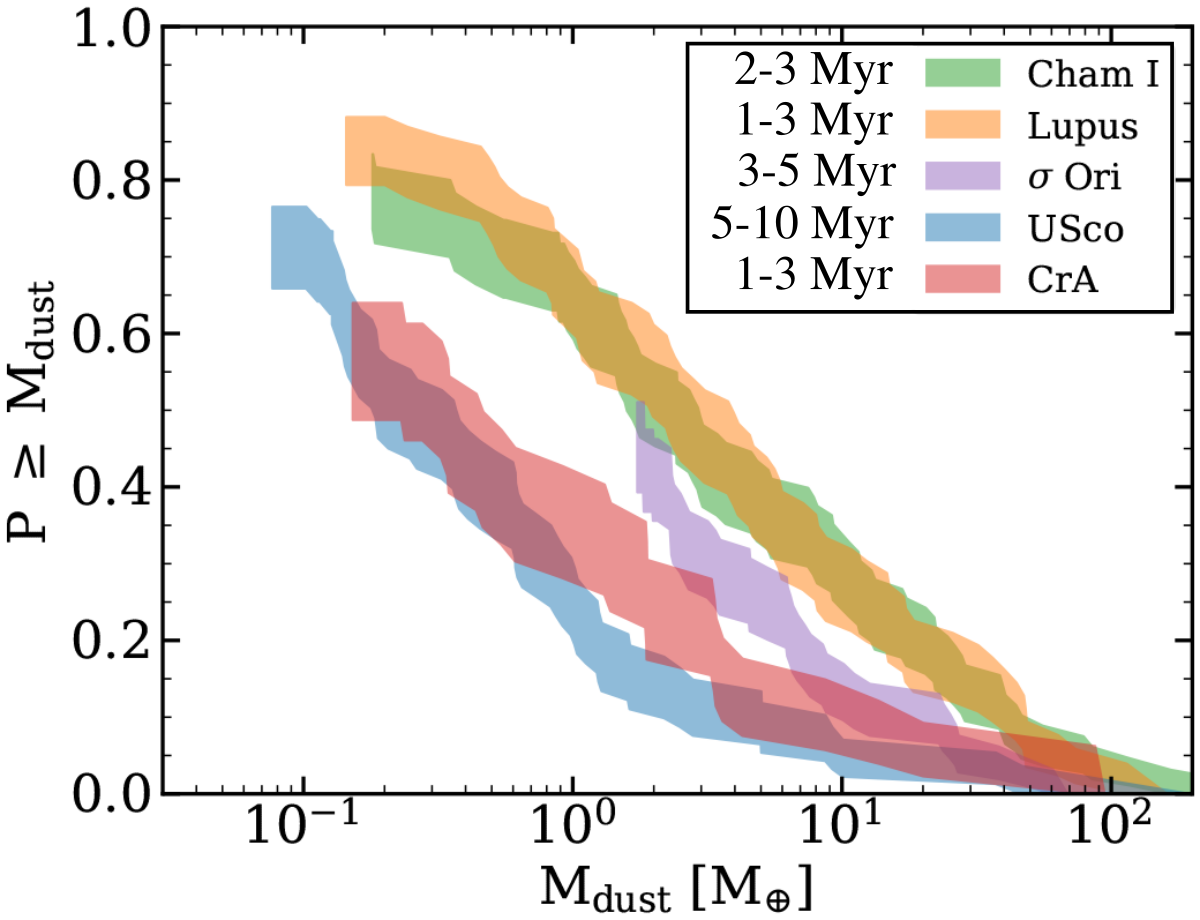
Cazzoletti+ 2019
Alternative to external photoevaporation:
Disk size distribution
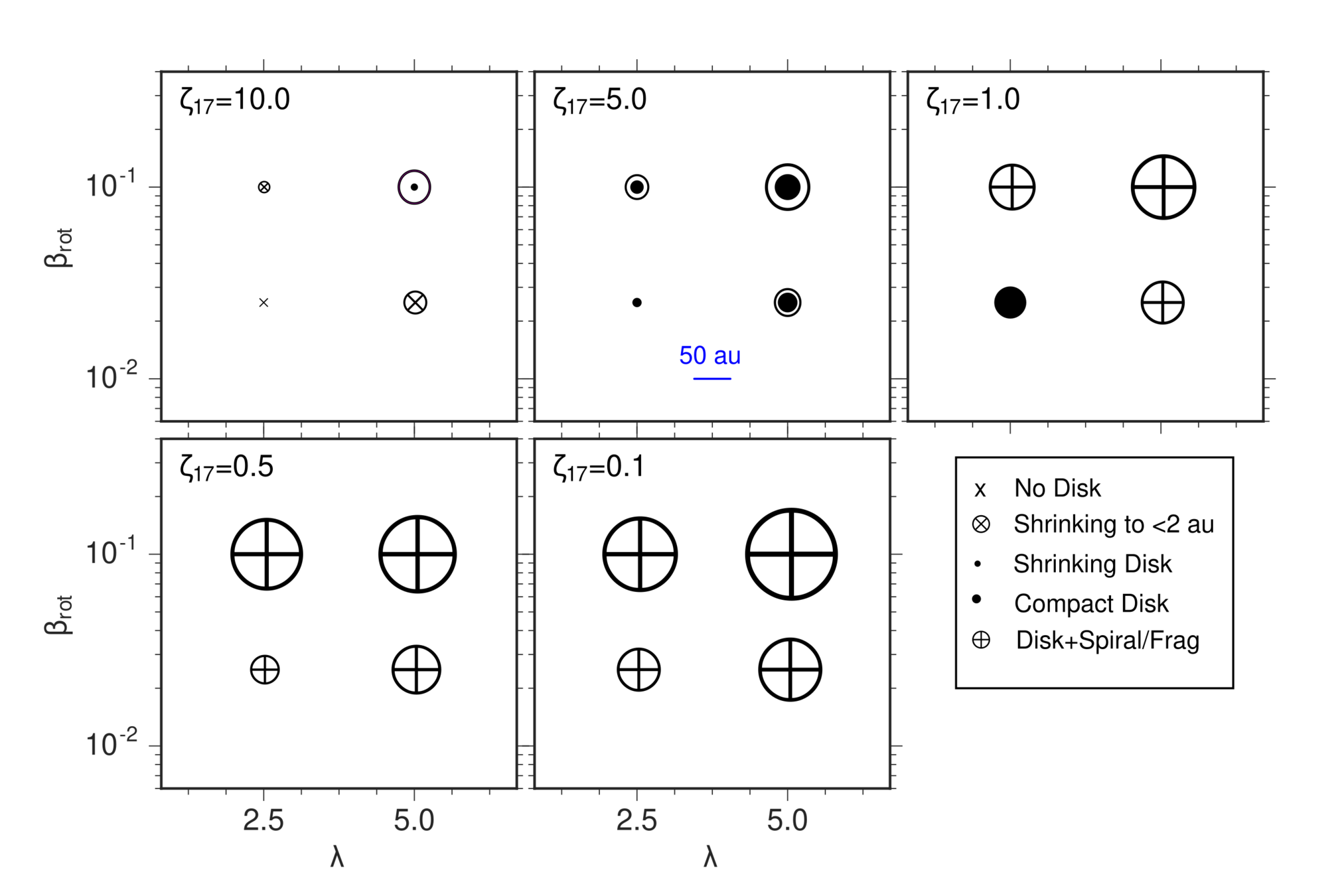
Küffmeier, Zhao & Caselli 2020
Take-away points
Linear polarization of dust reemission at wavelength >200 micron is a good tracer of magnetic field structure on scales beyond the disk.


(Cosmic-ray) ionization might be a key parameter for setting the difference in mean disk size between star-forming regions of similar age.
At smaller wavelengths (i.e., SOFIA HAWC+) and regions of higher column densities, the signal tends to be dominated by absorption instead of emission causing a flip in orientation.
